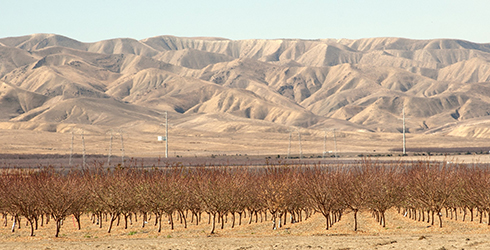Coping with drought – Institutional innovation in water management
Once again we see how path-dependency, poor institutions and lack of governance have detrimental effects on water management. The most blatant and acknowledged example in the US is from California. We have all read about the aggravated water situation in California. In Sweden it has been featured on the Swedish Radio and highlighted in Huffington Post. To get an expert’s view SIWI invited Nicholas Brozović of the Water for Food Institute at the University of Nebraska to hold a lecture at the Royal Swedish Academy of Agriculture and Forestry, KSLA.
During a very fruitful breakfast seminar Nicholas provided us with insights into how the institutional set-up in different US states will have implications for groundwater management. Even if the situation is dire in some of the states, and for many farmers, there are innovations to be made.
From the California and Nebraska examples presented by Nicholas, the audience learned that climate change will make extreme weather become the ‘new normal’. The current infrastructure for managing water for irrigation will not be able to cope with long-term droughts or extreme flooding. Groundwater and surface water are interdependent, and this is often not taken into account in current management. In fact there is no policy related to groundwater on the federal level at all, even for aquifers that underlie several states. Moreover, there is often no effective regulation at the state level. Some states do have strict regulations – but enforcement is lacking. One of the reasons for that is the variety and complexity of the systems and the lack of transparency.
Specifically in California, the effects of drought are exacerbated by institutional failure. This is the state that provides the rest of the US with a half of its fruits, nuts and vegetables. Its agricultural products, especially wine and almonds, have such high value that the state sometimes even experiences higher land prices for agricultural purposes than residential ones. Groundwater is generally not managed. Although farmers pay for energy to pump groundwater, there are no additional fees, and the water is valuable enough that it may be pumped from depths of 600-700 meters. In some cases past surface water sales to urban users have encouraged farmers to pump groundwater instead.
One of the largest aquifers in the world is the Ogallala or High Plains aquifer, which stretches across the US from North to South and supports much of the US irrigation of crops such as cotton, corn and soybeans. But in the past 50 years the water levels have declined rapidly, including by more than 100m in parts of Texas. In some places the aquifer is replenishing fast, such as in Nebraska, which has sandy soils and large rivers.
The states are taking some initiatives to rectify the situation, but often what needs to be done for the long-term, such as monitoring of water use, is extremely controversial and viewed with suspicion by farmers. Despite this, progress has been made and there are some good examples where agricultural water metering is in place, often because of transboundary commitments or ecological concerns.
In conclusion, we were reminded of some common myths about groundwater. One such myth is that declining groundwater levels are the primary driver of change in groundwater management. Unfortunately, meaningful regulations that lead to behavioural change, not just lip-service, are at the moment often driven by impacts of groundwater pumping on surface water, such as the recent lawsuit between the states of Nebraska, Kansas, and Colorado.
Increased rainwater harvesting is one way to go to improve agricultural productivity, including in the US, but consumers may also have to accept more expensive food. The costs and investments needed to grow food will likely increase, as will the pressure on limited water sources. For California, which is historically a dry state, the water situation will only grow more severe. It is not just the ‘new normal’ – it is actually getting ‘back to normal’.
- Read more from Nicholas Brozović.








